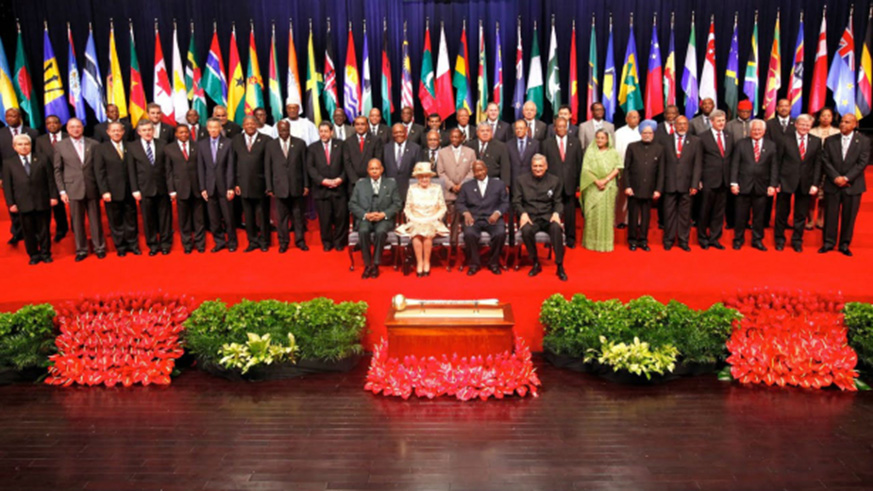

As has been said by many, every African celebrated the way peace between Ethiopia and Eritrea broke out without much fanfare. This region sorely needed such an example for a lesson.
It has since emerged that there may have been some secret, but positive, wheeling and dealing involving many parties from many quarters, but that’s beside the point.


Pan Butamire
The point is that the two countries are now back to their bosom sisterly relationship, as they once were.
If the story of those parties involved were true, it’d certainly be disappointing. Everybody would have wished the two leaders, on their own, to clinch the deal.
Failing which, then to only involve the AU. All the same, that the AU was involved and the deal done is cause for cheer.
The rest is now for the two countries to ensure that this sudden rapprochement leads to permanent, peaceful and mutual growth, befitting a model to be copied.
As they are wont to, outsiders are fanning speculation that inside Ethiopia, the Tigrayan People’s Liberation Front, formerly dominant in the ex-ruling coalition, is nursing discontent. And that Djibouti, hitherto Ethiopia’s sole route to the port, is averse to the reunion.
But hopefully Ethiopian stint in Rwanda as a peacekeeper in the early 1990s taught him lessons on what a people’s ‘superiority-complexed’ group and a father-figure neighbour can do to a society. That should arm him with the wisdom to navigate this situation.
In a revamped and lately continental-development focused AU, PM Abiy Ahmed’s has an ally to push the region from parochial and narrow self-serving interests to focusing on common gain.
There is no doubt that the Ethiopia-Eritrea rapprochement opens up an interesting scenario. Well managed, it can lead to a ‘Commo Wwealth of the Great East African Axis’, no less!
Djibouti can exploit the foreign forces competing over it for military bases in favour of a stronger and richer regional trio, with Ethiopia and Eritrea. From there, they and the sextet of the East African Community can reach out to each other, to form a united and thus stronger group of nine, which should not find it hard to pacify one of their own, South Sudan.
Similarly, they should find it easy to pacify Somalia and rope it in. And, without doubt, Sudan will jump at the chance to join in, to form a solid group of eleven.
This, however, will require some prior house-cleaning in the East African Community.
It will call for some EAC members abandoning their obsession with culling their population to give way for mango-growing as a vision for their sustainable future. Also, from taking a neighbouring family member whose vision is all-round development, for an enemy.
Further, it’ll require some members straightening their forked tongue that talks development only to turn round and try to inject its venom in a fellow member’s back. And too, to stop playing an inverted Robin Hood, robbing their country’s poor to enrich the rich!
We can say more, but why talk ill of countries’ leaders who are likely victims of carcinophobia and gerontophobia?
Fomenting a rebellion for a fellow member? One that’s actually on her knees, begging for collaborative, mutual advancement? What kind of stony and treacherous heart can unceasingly dwell in such a member’s chest?
If they don’t want progress for fellow members, don’t they want it for their poor citizens? Or is it a case of a demential condition that may be responsible for such incomprehensible conduct?
Whatever the case, the adversary they seek to create can inflict pain when bent to that extreme. And that fact is time-tested. But it’s not as if they don’t know – and perhaps to their grief.
Talk about finding trouble-seekers in their lair and leaving them there! It’ll be realty this time round.
But we digress. We were talking sense and should not let passing clouds cloud our mind.
Forming an alliance of wealth-creation in the ‘Great East African Axis’ makes a lot of sense.
With Port Sudan; Port de Djibouti; Massawa Port of Eritrea; Mogadishu, Kismayu and Berbera ports of Somalia; Mombasa and Malindi ports of Kenya; Dar es Salaam, Tanga and Mtwara ports of Tanzania, who can talk of a landlocked hinterland?
In fact, with eleven well developed ports, the waters of the Indian Ocean themselves would be crying out for a bigger hinterland that can need or generate more cargo to transport!
Now imagine a network of infrastructure – all-weather road highways, electric standard gauge railways, electricity-bearing pylons, oil pipelines, the lot – criss-crossing the entire axis.
With this ‘Great East African Axis’ up and kicking, it can be one hell of a gargantuan pillar that can spur the growth of other regional pillars to support a first world of an African Union.
And no, Sir/Madam, these are not the ravings of a demented old geezer!


